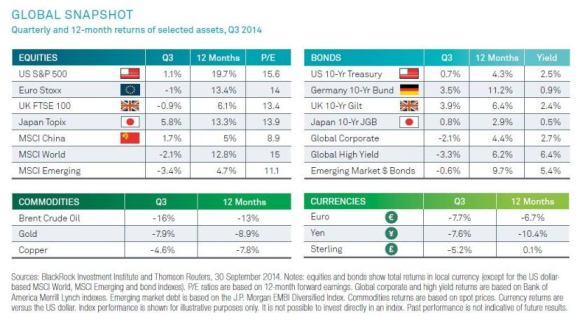The Liquidity Challenge
3 Jul 2014

Global liquidity (the overall looseness of financial conditions) has been plentiful thanks to years of monetary easing by central banks. Yet operational, or market
liquidity, has gone in the opposite direction.
So what is the best way to manage liquidity risk in portfolios – and to exploit the return premium in less liquid assets?
The investment team at BlackRock debated this topic and below is a summary of our conclusions:
- Market liquidity has declined since the 2008 financial crisis. The situation is challenging in US corporate bonds – and more so in euro and sterling equivalents. Volumes are concentrated in new issues and trading sizes are declining – even as these markets have doubled in size in the past seven years.
- Traditional liquidity providers such as dealers and banks have pulled in their horns due to risk aversion and a post-crisis gusher of regulations that make this business less attractive. And rising rates (a likely scenario) could cool investors’ infatuation with corporate bonds and hit the market’s lifeblood: new issuance.
- There are signs of improvement or at least stabilisation. A permanent liquidity fix, however, has to include a mix of bond standardisation, new venues such as electronic and matching platforms, and trading practices that go beyond the dealer-to-dealer and dealer-to-client models.
- Many bond prices currently are at or near record highs. What happens when central banks change gears and hike rates? Poor corporate bond market liquidity could (at least temporarily) worsen any market downturn, especially given stretched valuations. Prices could gap down in case of a wave of reallocations out of corporate bonds – although the (super-sized) appetite for quality yield from insurance companies and other institutions is a stabiliser.
- Investors prefer liquidity – and are prepared to pay a premium for liquid assets. The flip side: Less liquid assets tend to deliver superior returns in the long run, according to academic and our own research. The more illiquid the asset, the greater the expected rate of return must be.
- There are many subtleties to this. In equity markets, other return factors such as value (versus growth) and momentum can overshadow liquidity or mitigate its effect. And illiquidity strategies require patience: Liquid investment grade bonds have been kings since the financial crisis.
- A long horizon and risk management are key in any strategy aimed at capturing the return premium from holding less liquid assets. We propose a framework for scoring illiquid assets to guide a decision on whether to include them in a portfolio.
In Singapore, this material is issued by BlackRock (Singapore) Limited (company registration number: 200010143N). Investment involves risks. Past performance is not a guide to future performance. There is no guarantee that any forecasts made will come to pass. Reliance upon information in this material is at the sole discretion of the reader. This material is not intended to be relied upon as a forecast, research or investment advice, and is not a recommendation, offer or solicitation to buy or sell any securities or to adopt any investment strategy. Any opinions contained herein, which reflect our judgment at this date, and may change as subsequent conditions vary. The information and opinions contained in this material are derived from proprietary and non-proprietary sources deemed by BlackRock to be reliable, are not necessarily all-inclusive and are not guaranteed as to accuracy. This material is for informational purposes only and does not constitute an offer or invitation to anyone to invest in any BlackRock fund and has not been prepared in connection with any such offer. Any research in this material has been procured and may have been acted on by BlackRock for its own purpose. The results of such research are being made available only incidentally. BlackRock® are registered trademarks of BlackRock, Inc. All other trademarks, servicemarks or registered trademarks are the property of their respective owners. © 2014 BlackRock Inc. All rights reserved.




